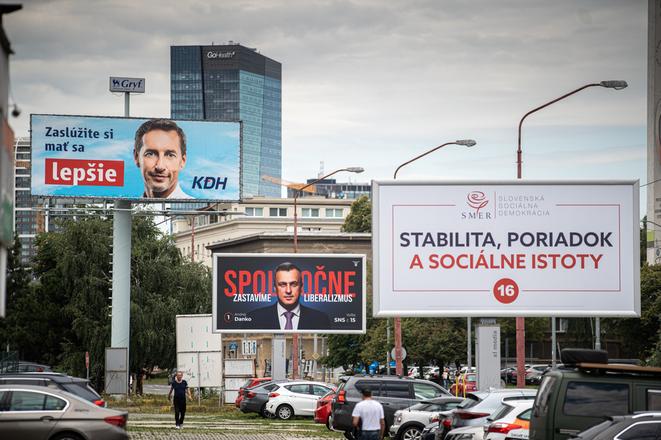For the past year, since the fissiparous coalition formed in March 2020 came apart at the seams, pollsters have been dutifully reporting the fortunes of Slovakia’s political parties from the perspective of an impending early election. Inevitably, narratives have emerged.
The main story is the revival of Smer. This protean party, which would like you to think of it as “social democratic” (more recently it has begun branding itself as the tribune of “Slovak social democracy”, whatever that might be), is now a right-wing populist party, one with no vision but an extremely gifted leader.
Back in 2012 Smer achieved the astonishing feat (in a fully proportional electoral system) of winning an absolute majority in parliament. It then proceeded to do precisely nothing with it, at least on the surface.
Numerous investigations, prosecutions, witness testimonies and convictions since 2020 suggest that a great deal of activity was going on at the time, allegedly to corrupt parts of the police, the justice system and various organs of the state for the benefit of business tycoons close to Smer’s leadership. But when it came to the economy, it adopted a ‘steady as she goes’ approach that left the free-market reforms of the 1998-2006 SDKÚ-led governments largely in place.
So much for “social democracy”.
Smer’s 44-percent support of 2012 duly sank to 28 percent in 2016, which was still enough to keep it in government. But the fallout from the murder of journalist Ján Kuciak and his fiancée Martina Kušnírová in 2018 accelerated its decline and helped drive the party from power in 2020, when it attracted just 18 percent.
After Peter Pellegrini subsequently split from founder Robert Fico to set up a new party, Hlas, many predicted Smer was headed the way of the Movement for a Democratic Slovakia (HZDS), the electoral juggernaut of the 1990s that later evaporated.
Fico, a three-time prime minister, has instead staged a remarkable comeback and, after two years during which Pellegrini seemed ascendant, regained Smer’s lead in the polls.
It’s a significant political achievement, one that has leveraged the failures of the post-2020 government(s) and some extraordinarily conspiratorial messaging.
But viewed from a wider perspective, Smer – like all the other parties – is in a weak position.


 Billboards in Bratislava ahead of the September 2023 early election. (source: SME - Marko Erd)
Billboards in Bratislava ahead of the September 2023 early election. (source: SME - Marko Erd)